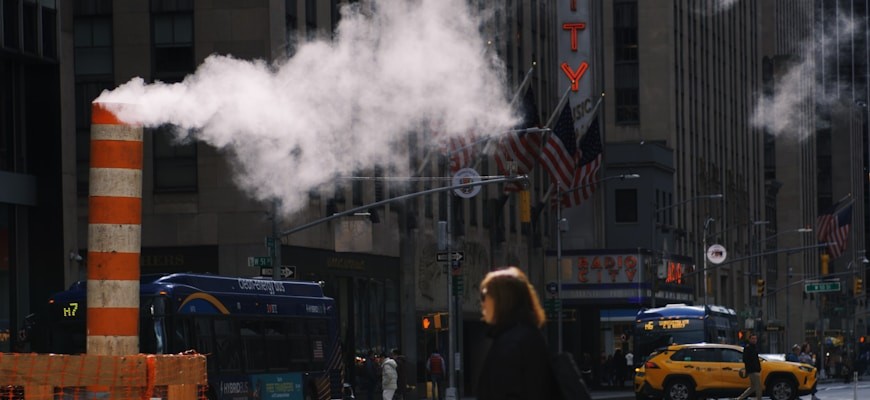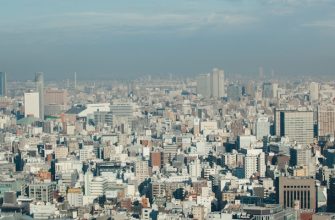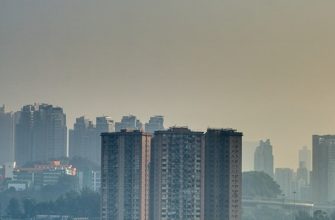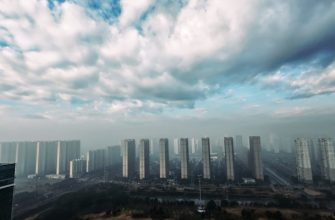- Understanding Urban Air Pollution: Its Impact on Health
- Exploring the Link Between Air Quality and Respiratory Issues
- Innovative Technologies for Cleaner City Air
- Natural Solutions: Urban Green Spaces and Their Benefits
- Community Initiatives to Combat Air Pollution
- Policy Changes for Healthier Urban Environments
Understanding Urban Air Pollution: Its Impact on Health
Urban air pollution poses a significant threat to public health, affecting millions of individuals living in cities worldwide. Pollutants such as particulate matter, nitrogen dioxide, and sulfur dioxide are commonly found in urban environments, stemming from vehicular emissions, industrial activities, and construction work. These contaminants can lead to a range of health issues, from respiratory diseases to cardiovascular problems.
Research indicates that prolonged exposure to polluted air can exacerbate pre-existing health conditions and lead to new ailments. Children, elderly individuals, and those with compromised immune systems are particularly vulnerable to the adverse effects of air pollution. The impact on mental health is also being increasingly recognized, with studies linking poor air quality to anxiety and depression.
- Respiratory Issues: Exposure to air pollutants can lead to chronic respiratory diseases, including asthma and chronic obstructive pulmonary disease (COPD).
- Cardiovascular Problems: Polluted air is associated with increased risks of heart attacks, strokes, and hypertension.
- Neurological Effects: Some studies suggest a correlation between air quality and cognitive decline, potentially affecting memory and learning.
- Reproductive Health: Air pollution may also impact reproductive health, contributing to complications during pregnancy, such as low birth weight and premature births.
To mitigate the health risks associated with urban air pollution, various alternative solutions are being explored. These include enhancing public transportation systems, promoting the use of electric vehicles, and implementing stricter regulations on industrial emissions. Additionally, increasing green spaces in urban areas can significantly improve air quality by filtering pollutants and providing cleaner air for residents.
Awareness and education about the health implications of urban air pollution are crucial for fostering community engagement and advocating for policy changes. By understanding the effects of air quality on health, individuals can take proactive steps to protect themselves and their families while contributing to broader efforts aimed at improving urban air quality.
Exploring the Link Between Air Quality and Respiratory Issues
Air quality plays a crucial role in determining the overall health of urban populations. Poor air quality is linked to various respiratory issues, including asthma, chronic bronchitis, and other lung diseases. The relationship between air pollutants and respiratory health is well-documented, emphasizing the urgency of addressing air quality in cities.
Several key pollutants significantly impact respiratory health:
- Particulate Matter (PM2.5 and PM10): These tiny particles can penetrate deep into the lungs, causing inflammation and aggravating existing respiratory conditions.
- Nitrogen Dioxide (NO2): Commonly produced by vehicles and industrial activities, NO2 exposure has been associated with increased asthma attacks and reduced lung function.
- Ozone (O3): Ground-level ozone can lead to respiratory distress, particularly in sensitive groups such as children and the elderly.
- Sulfur Dioxide (SO2): Emitted from burning fossil fuels, SO2 can cause airway inflammation and contribute to the development of respiratory diseases.
Research indicates a direct correlation between urban air quality and the prevalence of respiratory ailments. Cities with high levels of air pollution often report increased hospital admissions for respiratory conditions. For instance, studies show that exposure to high levels of particulate matter is linked to a higher incidence of asthma in children.
To mitigate the effects of poor air quality on respiratory health, several alternative solutions can be considered:
- Urban Green Spaces: Increasing greenery in urban areas can help improve air quality by absorbing pollutants and providing cleaner air.
- Public Transportation: Expanding public transport options can reduce the number of vehicles on the road, leading to lower emissions and better air quality.
- Air Filtration Systems: Installing advanced air filtration systems in homes and public buildings can significantly reduce indoor air pollution.
- Community Awareness Programs: Educating the public about the importance of air quality can encourage healthier practices and advocacy for cleaner air initiatives.
Addressing the link between air quality and respiratory issues is essential for safeguarding public health in urban environments. Implementing these alternative solutions can not only enhance air quality but also promote a healthier lifestyle for city dwellers.
Innovative Technologies for Cleaner City Air
Urban air quality has become a pressing concern, impacting health and well-being. Innovative technologies designed to purify city air are emerging as vital solutions. These advancements not only aim to reduce pollution levels but also enhance the quality of life for urban residents. By implementing cutting-edge air purification systems, cities can create healthier environments, ultimately leading to improved public health outcomes.
- Smart Air Quality Monitors: These devices continuously track air pollution levels, providing real-time data that can help municipalities take action against unhealthy air quality.
- Green Infrastructure: Urban green spaces, including vertical gardens and green roofs, play a crucial role in absorbing pollutants and improving air quality.
- Advanced Filtration Systems: Innovative air filtration technologies, such as HEPA filters, are being integrated into public transportation systems and buildings to reduce indoor air pollution.
- Electric Vehicles: The shift towards electric mobility reduces emissions significantly, contributing to cleaner air in urban areas.
- Photocatalytic Coatings: These coatings can be applied to buildings and streets to break down pollutants when exposed to sunlight, actively improving air quality.
These technologies not only address the immediate problem of air pollution but also contribute to long-term sustainability. The implementation of air purification solutions fosters a cleaner, healthier urban environment. As cities continue to grow, the adoption of innovative technologies for cleaner air becomes increasingly critical for public health and environmental preservation.
In conclusion, the integration of advanced air quality solutions is essential for combating the detrimental effects of urban air pollution on health. By prioritizing these innovative approaches, cities can enhance air quality, leading to healthier communities and a better quality of life for all residents.
Natural Solutions: Urban Green Spaces and Their Benefits
Urban green spaces play a crucial role in mitigating the negative effects of city air on health. These natural solutions provide numerous benefits that enhance both environmental quality and human well-being. By integrating parks, gardens, and green roofs into urban planning, cities can create healthier atmospheres for their residents.
- Improved Air Quality: Urban greenery absorbs pollutants, including carbon dioxide and particulate matter, effectively purifying the air. This leads to a decrease in respiratory issues and other health problems linked to poor air quality.
- Temperature Regulation: Vegetation helps to cool urban environments, reducing the heat island effect. Lower temperatures contribute to improved comfort levels and decreased heat-related illnesses.
- Enhanced Mental Health: Access to green spaces has been associated with reduced stress and anxiety. Nature’s calming presence promotes mental clarity and emotional stability.
- Increased Physical Activity: Parks and green areas encourage outdoor activities, such as walking, jogging, or cycling, which are essential for maintaining a healthy lifestyle and combating obesity.
- Community Well-Being: Green spaces foster social interaction and community engagement, providing a sense of belonging and improving overall quality of life.
Incorporating more nature into urban settings is not just an aesthetic choice; it is a vital strategy for enhancing public health. City planners and policymakers must prioritize the development of urban green spaces to combat the adverse effects of city air pollution.
Ultimately, the benefits of urban greenery extend beyond mere aesthetics, offering substantial health advantages and contributing to a sustainable future. Investing in natural solutions like green spaces is essential for creating healthier cities.
Community Initiatives to Combat Air Pollution
Air pollution remains a critical issue affecting urban health, prompting communities to take proactive measures to combat this pressing concern. Local initiatives play a vital role in addressing air quality challenges, fostering a cleaner environment and enhancing public well-being.
- Awareness Campaigns: Community-led awareness programs educate residents on the sources and effects of air pollution, empowering individuals to make informed choices.
- Green Spaces Development: Initiatives to create parks and green belts in urban areas significantly improve air quality, providing natural filters for pollutants.
- Public Transportation Promotion: Encouraging the use of public transit reduces the number of vehicles on the road, thereby decreasing harmful emissions and improving urban air quality.
- Tree Planting Drives: Organizing tree planting events helps increase the number of trees in cities, which absorb carbon dioxide and release oxygen, contributing to cleaner air.
- Community Clean-Up Days: Engaging local residents in clean-up efforts not only improves environmental aesthetics but also addresses litter that can contribute to pollution.
These community initiatives not only aim to reduce air pollution but also enhance public health through collective engagement. By working together, residents can create sustainable solutions that lead to lasting improvements in urban air quality. Ultimately, a united approach is essential for effectively combating air pollution and safeguarding community health.
Policy Changes for Healthier Urban Environments
The imperative for policy changes to foster healthier urban environments has never been more critical. Urban air quality significantly impacts public health, leading to respiratory diseases, cardiovascular conditions, and other serious health issues. Addressing this challenge requires comprehensive policy reforms aimed at reducing air pollution and promoting cleaner air in cities.
- Strengthening Emission Standards: Implementing stricter regulations on vehicle emissions and industrial discharges is essential. Enhanced standards can lead to a considerable reduction in harmful pollutants, thereby improving air quality.
- Promoting Public Transportation: Expanding and improving public transit options encourages residents to rely less on personal vehicles. This shift not only reduces traffic congestion but also lowers overall air pollution levels.
- Encouraging Green Spaces: Policies that facilitate the creation of parks and green areas in urban settings can greatly enhance air quality. Vegetation plays a vital role in absorbing pollutants and providing cleaner air for inhabitants.
- Implementing Clean Energy Solutions: Transitioning to renewable energy sources reduces reliance on fossil fuels, thereby decreasing emissions that contribute to poor air quality. Policies supporting solar, wind, and other sustainable energy options are crucial.
- Enhancing Public Awareness: Educating citizens about the health impacts of air quality and promoting actions they can take to mitigate pollution is vital. Awareness campaigns can drive community engagement towards improving urban environments.
These policy changes are not merely beneficial; they are essential for creating healthier urban environments. The integration of these strategies will lead to significant improvements in air quality, ultimately enhancing the health and well-being of urban populations. As cities grow, the need for innovative and effective approaches to air quality management becomes increasingly important, ensuring that urban living does not come at the cost of public health.








